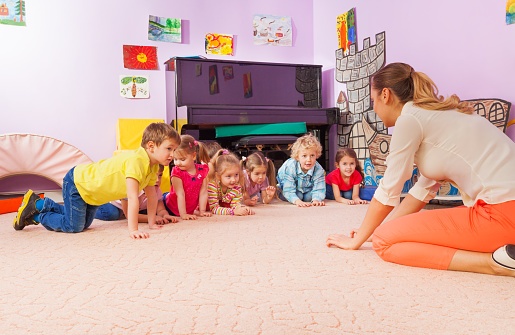Ways your child care policy can support recommended screen time for kids
Children spend an average of 7 hours per day watching television, playing video games and surfing the internet, even though research suggests that more than 2 hours of recreational screen time daily is associated with poor health, overweight and obesity. For children under the age of 2, no screen time is advised.
It is easy for recreational screen time to rack up, especially when it is used to fill transition periods or as a “quiet time” activity in child care settings, out-of-school programs, and at home. Take time to assess how much screen time kids are getting while in your care, and, if needed, create an action plan to replace that time with more constructive, healthy activities. We can help.

Put it in writing.
After you create an action plan, put your policy in writing and share it. Write your policy into the staff handbook, mention it in staff meetings and post it in the break room. Put it in parent communications like orientation materials and newsletters. Written policies help ensure that staff are informed and accountable. Communicating the policy to parents and families reinforces its importance and adds yet another level of accountability.
Sample policy statements.
Here are some best practices to consider as you think about how your child care program can help families stay within the daily limit of recommended screen time for kids:
We do not allow the use of television, computers or other digital devices for recreational purposes in this program. Similar devices may be used for instructional or physical activity purposes for a maximum of 30 minutes per week.
We do not rely on television, movies or computers to fill space in our daily schedules. We strive to build curriculum and daily routines that promote physically active play, cognitive and social development.
We do not use television, movies or computers as a back-up for outdoor play in the event of inclement weather. We have plans in place to help our staff and facility accommodate active indoor play as needed.
We do not withhold active play from children as punishment for undesired behavior. If children’s behavior during active play endangers themselves or others, they may be given 5 minutes or less to calm themselves or settle down before resuming cooperative play.
Support the implementation.
Be proactive in helping your staff implement and stick to your screen time policy. Brainstorm, research and collaborate with staff to intentionally schedule more active time into each day. Take a walk, play a game, dance…get creative with activities like freeze dance, balloon kickball or obstacle courses. You can find ideas in the the Jump IN Resource Hub.
Help staff be prepared to improvise when your schedule must change due to weather or other circumstances. Work with kids to create a list of “rainy day” activities that kids and/or staff can choose from with little to no preparation required.
If your team previously relied on television or computers to occupy children during hectic transition periods such as pick-up and drop-off times, work together to develop activity stations for free play during this time instead.
Get help writing your policy.
Written documentation is important, but it doesn’t stop at putting your screen time policy in writing. Providing alternative activity ideas—perhaps keeping a folder or binder full of strategies in locations easily accessible to staff—is a great way to support staff and facilitate compliance.
The Jump IN Resource Hub contains a variety of toolkits and other materials to help you write policies like these. Download a policy writing toolkit now.GET TOOLKIT
Other resources for child care providers:
6 Resources for Physical Activity and Learning in Child Care, Preschool
Family Style Meals at Daycare, Preschool Encourage Healthy Eating
Topics: Child Care, Screen Time
Subscribe for more
Want more ideas for healthy schools, workplaces, child care providers, and families? Subscribe to our blog for weekly tips delivered right to your inbox!
Physical activity improves student performance at school NEXT »
How to Support Active Play: Physical Activity Ideas for Kids
